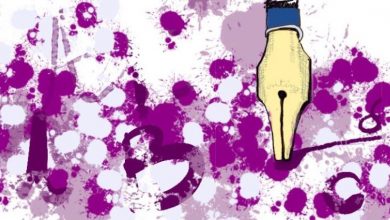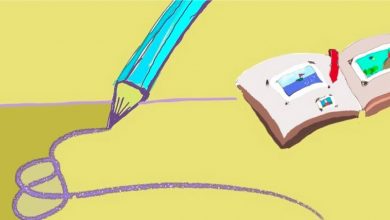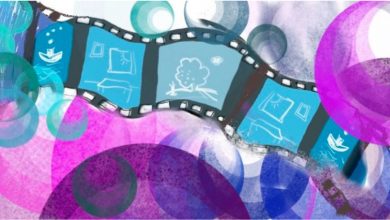How to decide what I should learn?
Making decisions is an inherent part of any self-directed learning. Which course to take, which book to buy, what material to learn next are all questions learners need to be able to answer. Having choices is a good thing. However, what happens when we have too many choices? In our modern world, where we can learn anything and become anyone, how do we make these decisions? This article relies on findings about decision making from philosophy, social and cognitive sciences to attempt to make living in the modern world somewhat easier.

Why did I choose this tool?
In today’s world, the overabundance of choice is something that ails us all. Decision making is a time consuming and cognitively demanding process. It is good for any learner to be familiar with tools and strategies for making life easier in this respect.
How does this apply to being a trainer?
Trainers will become familiar with thinking strategies that can facilitate decision making processes for them.
Content
Having the opportunity to choose is necessary and essential for our well-being. However, the problems arise when we have too many choices. In today’s individualistic and self-centered culture in which we “only live once”, want to “make the most of our lives” and “have the best for ourselves,” it’s easy to become frustrated trying to decide what in fact is best for us.
To decide on that, we start sifting through our options and their varying aspects. We compare and contrast, we look at pros and cons of each situation. By the end, even if we have made the “best” possible decision, we might end up feeling frustrated; by that time we have already spent so much time and energy that we feel depleted and unable to enjoy the results of our decision. Not to mention the impossible-to-reach and ridiculously high expectations we have created along the process simply because it took so long.
Luckily, there are ways to optimize and streamline our decision-making processes. First thing to remember is that, as Barry Schwartz in his book “The Paradox of Choice” explains, what most of the time we care about are subjective results of our decisions, not objective ones (2004). It means that the reasons we made a particular choice do not have to be somewhere out there, but inside of us. We have the power to create our reasons, and in the sea of choices, creating our own reasons might be the most reasonable thing we can do.
We have the choice to make ourselves into the kind of person that chooses to become someone who is learning programming, or salsa. As Ruth Chang explains, “We can put our very selves behind an option, ‘Here is where I stand’” (2014).
Aside from creating our own reasons, we can also create our own options. Here Schwartz makes a distinction between choosers and pickers. Pickers passively select from whatever is available while choosers reflect if the given options suit them and if not, they go on to create their own options.
What also helps to understand and ease our decision making fatigue is acknowledging that most of the time one option is not better than the other (Chang, 2014). While one option has some attractive traits, the other option has something else, and the third one has something completely different. In such a situation, instead of endlessly weighing what is best, we should settle for that option which is “good enough”. Learning to accept such an approach to life and learning will increase our satisfaction and simplify decision making.
Schwartz refers to people who have adopted such an attitude to life and decision making as ‘satisfiers’, those who look for satisfying options, as opposed to ‘maximizers’, those who want the maximum out of their choices. It is maximizers that most often end up with regrets, missed opportunities, failed expectations, disappointments, and self-blame. To become a satisfier, we need to really know ourselves and what our standards for good enough are and rely on them whenever we face a decision.
Also, not all options are created equal. Just because we have the possibility to choose, it doesn’t mean we should necessarily use it every time. We need to decide which choices really matter to us and focus our time and energy there. And for everything else, it is beneficial to create default rules that we can fall back on to conserve our decision making capacities. We can for example, create a preset limit on the number of books we buy or on the time we spend doing research etc. Being able to opt out of decision making saves us considerable energy and time. By restricting our options, we will be able to choose less and feel better (Schwartz).
Indeed, there is an underestimated beauty and power in limitations and structures. By creating preset choices, rules and habits to follow, our mental energy is saved from making choices and spent on getting things done. For example, I have squandered many mornings trying to decide if I should start the day with learning German, work on my copywriting skills or search for jobs. Once I established a rule “evening time is German time” and got into the habit of implementing it, this freed up my attention, time and energy in the morning to get other things done.
The uncomfortable side of making “wrong” choices dreaded by many is regret. “Oh, I shouldn’t have taken this subject, I should have picked that one”. Undoubtedly, there are many things to learn from our regrets, but not if we focus on them too much and for too long.
To curb regret we need to remember that we can control the process, but not the outcome of any decision making (Griffiths, 2018). “It also pays to remember just how complex life is and to realize how rare it is that any single decision has the life-transforming power we assume it would” (Schwartz, 2004). No amount of reasoning, no matter how deliberate and sophisticated, can predict 100% what our future will bring. Also, it is good to remind ourselves that our evaluation of our present choices often compares with idealized alternatives that exist only in our imagination.
Another thing to bear in mind is the incredible ability of human beings to adapt to anything, good or bad. It means that whatever satisfying choice we do make, the satisfaction will probably wane after a certain time. Not only the experience itself will start to feel less good, but also the good feeling we have will start to decrease! The best we can do is understand that our experiences will change and when they do, we should remind ourselves how good they actually are rather than focus on how less good they are (Schwartz, 2004).
How we evaluate our choices is affected by how we compare them with other choices, as there is no absolute standard for “the best”. However, by doing so, we end up thinking about what we missed out on, which will inevitably diminish the attractiveness of our final choice. In such case, it is good to make our choices irreversible. Once we know we can’t go back on the option we chose, our brain engages in various psychological processes that help us appreciate what we already have.
Additionally, whether we categorize our decisions as good or bad depends on the expectations we have about them. The logical answer follows that the satisfaction with our own choices will increase if we lower down our expectations. Moreover, we should consider replacing expectations with anticipation. This is a milder term, which does not have the same degree of certainty of a specific outcome, so we are less likely to succumb to negative feelings if the wanted outcome does not happen. Anticipation adds an element of positive excitement to the whole process. It is why people start planning their holiday months ahead—they enjoy it! They understand that making decisions is a part of this pleasant experience of having a holiday.
With practice, discipline, and new ways of thinking about decision making, we can make this process easier, less time consuming and mentally demanding.
Exercise 1: Costs of Decision Making
This exercise will help you better appreciate the costs of the decisions you make, which may lead you to give up on some of them or to establish rules of thumb for yourself, about how many options to consider or how much time and energy to invest in choosing.
- Review a recent decision related to learning that you’ve made.
- Itemize the steps, time, research, and anxiety that went into making that decision.
- Remind yourself how it felt to do that work.
- Ask yourself how much your final decision benefited from that work.
____________________________________________________________________________________________________________________________________________________________________________________________________________________________________________________________________________________________________________________________________________________________________
Exercise 2: Creating Options for Yourself
- Try to shorten or eliminate deliberations about decisions related to your particular learning situation.
- Use some of the time you’ve freed up to ask yourself what you really want from that experience.
- If you discover that none of the present options the world presents in those areas meets your learning needs, what better options can you create?
____________________________________________________________________________________________________________________________________________________________________________________________________________________________________________________________________________________________________________________________________________________________________
Exercise 3: Good Enough
- Think about some moments in your life when you settled, comfortably, for “good enough”.
- Scrutinize how you choose in those areas.
- Then apply that strategy to a decision making process related to a particular learning situation you had or are currently having.
____________________________________________________________________________________________________________________________________________________________________________________________________________________________________________________________________________________________________________________________________________________________________
Exercise 4: Regret
Think of a learning situation that makes you feel regret and apply the following to it:
- Adopt the standards of a satisfier rather than a maximizer.
- Practice gratitude for what is good about a decision rather than focusing on a bad decision and being disappointed.
Look at the situation now and write any new insights about it?
Now I look at the situation and …____________________________________________________________________________________________________________________________________________________________________________________________________________________________________________________________________________________________________________________________________________________________________
Reflection questions:
- What did you think of the article? What insights have you gained while reading it?
- What are the challenges you usually come across when deciding on what to learn?
- How will you apply the learned theory into practice?
- Does a conscious choice of learning methods or content help you in life-long learning?
- Do you have moments when it is worth choosing what to learn and moments when you just follow the impulse? How does this relate to your profile as a learner?






